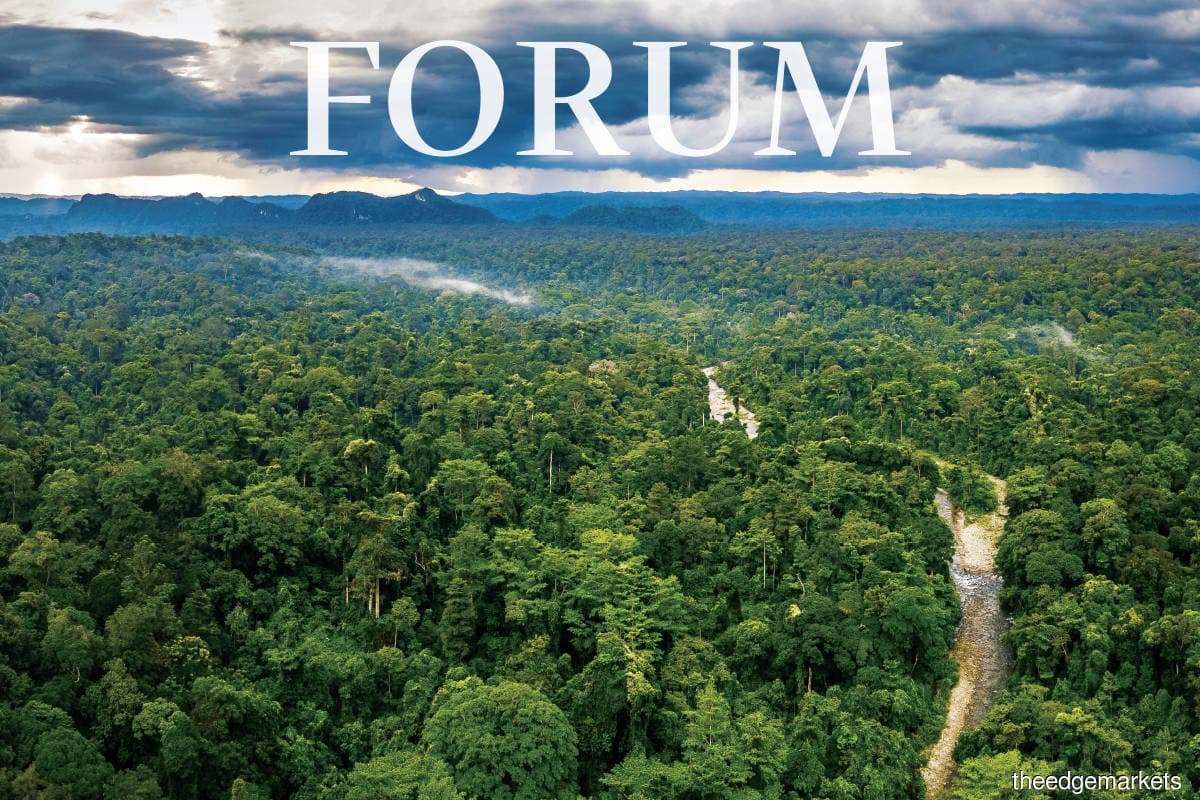
This article first appeared in Forum, The Edge Malaysia Weekly on December 19, 2022 - December 25, 2022
The mega-challenges engulfing the world today — from Covid-19 to climate change — have highlighted the interdependencies between people, planet and the economy. As we chart a course to reignite global growth and drive green, resilient and inclusive development, we must not ignore these interlinkages. Nature — meaning biodiversity and the services that healthy ecosystems provide — is central to this endeavour, especially in developing countries where poor people in rural areas tend to rely heavily on nature’s services and are the most vulnerable to its depletion.
As the international community gathers in Montreal for the UN Biodiversity Conference (COP15), we must reaffirm the necessity of investing in nature, in tandem with climate action. After all, half of world gross domestic product (GDP) is generated by sectors — from agriculture and lumber to fisheries — that are moderately or highly dependent on ecosystems, and two-thirds of food crops rely at least partly on animal pollination.
But these vital natural assets are increasingly compromised. Nearly one million species of plants and animals are on the brink of extinction, and 60% to 70% of the world’s ecosystems are being degraded faster than they can recover. According to World Bank estimates, low-income countries could lose around 10% of their GDP annually by 2030, even if ecosystem collapse is confined to just a few services, such as wild pollination, food from marine fisheries and timber from native forests.
Nature loss is also closely connected to climate change. We now know that the two crises are reinforcing each other, and with potentially dire implications for the health of ecosystems globally. To fight climate change, we need strong,
vibrant forests and healthy oceans to absorb carbon dioxide; but climate change itself is jeopardising these systems.
Preserving biodiversity and ecosystems is the key to unlocking economic opportunities that can help communities thrive. Estimates show that adopting more sustainable ways of producing food, building cities and infrastructure, and generating energy could lead to US$10.1 trillion (RM44.62 trillion) annually in new business opportunities, creating 395 million jobs by 2030. The ocean economy alone has the potential to double (to US$3 trillion) by 2030.
But to tackle both biodiversity loss and the climate crisis, climate and nature goals need to be better coordinated. Globally, the Convention on Biological Diversity and the UN Framework Convention on Climate Change need to become more closely aligned in their processes and ambitions. Likewise, countries must do more to harmonise their Nationally Determined Contributions (emissions-reduction targets) and their National Biodiversity Strategies and Action Plans. And at the local level, communities need to be supported with investments in nature-based solutions, such as forests, which help with both climate mitigation and adaptation.
All this underscores the need for a whole-of-economy approach, engaging central governments, finance and sectoral ministries and others to support reforms that address market, policy and institutional failures. Otherwise, misaligned policy incentives will continue to put a negative price tag on nature’s services. As matters stand, governments are spending at least US$800 billion per year on subsidies (for fossil fuel, agriculture, and so on) that are potentially harmful to nature. Worse, environmental policy has been siloed off from development policies and strategies, with implementation often confined to a single ministry, despite the systemic risks posed by nature loss.
At COP15, countries will seek an agreement on the Post-2020 Global Biodiversity Framework, which could spur the comprehensive shift that is needed. Comprising a wide range of ambitious targets, the framework would address the triple environmental crises of nature loss, climate change and pollution, while also helping to alleviate poverty. But ensuring its effectiveness will require filling outstanding knowledge and methodology gaps, collecting more data and devising new tools and metrics to integrate diverse sectors and to quantify the benefits of action.
We also must do more to close the biodiversity financing gap, which is estimated to be as large as US$700 billion per year over the next decade. Bringing in more and better private finance is especially important. We need to take a holistic approach that involves both greening finance (directing financial flows from harmful projects to nature-positive ones) and financing green (mobilising greater investment in conservation, restoration and sustainable resource use).
To that end, the World Bank Group is supporting developing countries as they integrate nature, climate and development issues in their policy design and decision-making. We are undertaking projects that invest directly in the conservation of species and natural habitats and supporting livelihoods that rely on natural capital such as forests, fisheries and agriculture.
As the largest multilateral financier of biodiversity, the World Bank offers a range of financial services and tools to promote green investments. For example, Seychelles launched its first sovereign blue bond (which supports sustainable marine and fisheries projects) with World Bank support. The bank also introduced the
US$150 million “Rhino Bond”, a first-of-its-kind financial instrument tied to clear conservation targets, that channels private-sector investments to protect black rhinos in South Africa.
PROBLUE, a trust fund supported by 14 donors, has provided almost US$100 million in grant financing since 2018, helping to unlock US$4 billion in World Bank financing for projects from West Africa to East Asia. The bank is also working with countries to make global finance more sustainable, including by supporting the Taskforce on Nature-related Financial Disclosures, which seeks to increase transparency and integrate nature-based considerations into financial decision-making.
Given the strong linkages between poverty, climate change and biodiversity, preventing further nature loss is not only the right thing to do; it also makes good economic and development sense. We must continue to expand investments in protecting nature and producing more sustainably. The future of development depends on it. — Project Syndicate
Mari Pangestu is managing director of Development Policy and Partnerships at the World Bank
Save by subscribing to us for your print and/or digital copy.
P/S: The Edge is also available on Apple's AppStore and Androids' Google Play.